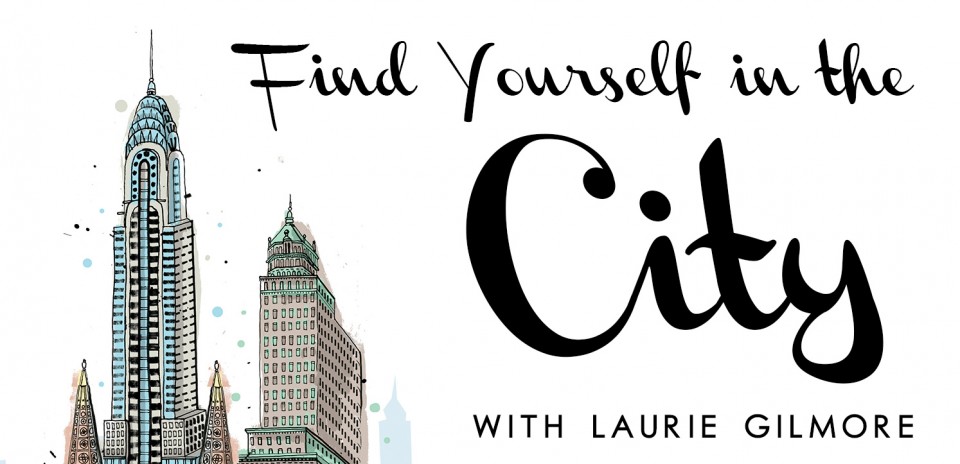Old MacDougal Had Some Cafes…

In Greenwich Village, the stretch of MacDougal Street between West 3rd and Bleecker is the site of a great deal of village history.
At the corner of MacDougal and Minetta Lane sits the Minetta Tavern. This tavern dates back to prohibition when it operated as a speakeasy until 1929 under the name, “The Black Rabbit”. The speakeasy was run by Eve Adams before she opened Eve’s Hangout—the lesbian tearoom located at 129 MacDougal. In 1937 the Minetta Tavern opened. Among its earliest customers were: Ernest Hemingway, Ezra Pound, E.E. Cummings, Edna St. Vincent Millay, Eugene O’Neill, Franz Kline, Dylan Thomas, and one of the West Village’s most famous bohemians—Joe Gould—whom the owner, reportedly, paid in spaghetti to sit in the window, so that tourists could catch a glimpse of a true bohemian. Joe Gould spent much of his time here during the period in which he claimed to be writing “An Oral History of Our Time’’ which, upon his death, turned out to be a mundane transcript of his daily life. Anachronistically, it is claimed that The Readers Digest was founded in 1923 in the basement of this location—accessible through a phone booth, or a trapdoor in the back—while The Black Rabbit speakeasy was in operation. Today the Minetta Tavern is run by Keith McNally, serves a much less bohemian crowd, and is home to the famous Black Label Burger priced at $28.00.
Café Wha? opened in 1959 at 115 MacDougal Street. Among its most famous early performers were Bob Dylan, Jimi Hendrix and Janis Joplin. Bruce Springsteen, Kool and the Gang, as well as comedians Richard Pryor and Bill Cosby also got their start here. Owner Manny Roth’s great ear for talent was credited with the discovery of many of these major talents. The original café closed in the late 1960s when Roth sold the club to Menachem Dworman who ran the club under the name Café Feenjon, and booked it with Middle Eastern music. Café Wha? was reopened on the site in the late 80s by Dworman’s son who operates the rock club in much the same vein as the original. Today the club draws many tourists in search of a glimpse of the historic music scene of Greenwich Village.
Caffe Reggio at 113 MacDougal Street is one of the last remaining original bohemian cafes in Greenwich Village. Reggio was opened in 1927, by Dominico Parisi, and it was Parisi who first introduced America to Cappuccino, when he imported their famous espresso machine from Italy. The first of its kind, made in 1902, the machine is bronze and chrome, decorated with dragons and a cherub, and is said to have cost Parisi his life savings of $1,000.00. Parisi started the café after being forced to give up his original profession as a barber due to failing eyesight. Amongst the other antiques on site are a bench which belonged to the Medici family, and a 16th century painting from the school of Caravaggio. Through the years, Reggio has been a favorite spot for writers including Kerouac and others of the Beat generation, and has featured in several films including Godfather II, and Inside Llewyn Davis.
The corner of MacDougal and Bleecker Street is the former location of two legendary cafés:
Le Figaro Café stood on the southeast corner of Bleecker and MacDougal and The San Remo was on the northwest corner.
Figaro (186 Bleecker. 1957-2008) was a notable hangout for the Beat Generation; a place to linger over coffee for hours. Bob Dylan, Lenny Bruce and Jack Kerouac were regulars, as well as folk musician Dave Van Ronk who wrote about the café in a description of the winter of 60/61 in his memoir, “The Mayor of Macdougal Street”: “…on the streets or in the joints, you hardly saw a soul you didn’t know. The afternoons were best. Sitting at a window table at the Figaro, playing chess, gossiping with friends, or just watching the snow…” An Al Pacino scene in the movie Carlitos Way was shot in Le Figaro.
The San Remo (93 MacDougal. 1925-1967) was a restaurant and café/bar whose heyday was in the era between the end of the second world war until the early 60s. It was very popular with bohemian artists and writers including James Agee, W.H. Auden, Tenessee Williams, James Baldwin, William S. Burroughs, Gregory Corso, Miles Davis, Allen Ginsberg, Frank O-Hara, Jack Kerouac, Jackson Pollock, William Styron, Dylan Thomas, and Gore Vidal. It is said to be the place where Ginsberg first met Dylan Thomas in the early 50s. Also in the early 50s, theatre legends Julian Beck and Judith Malina’s Living Theatre met up here during their residencies at the nearby Cherry Lane Theatre. In the later 60s, it became primarily a gay bar and drew clientele like Andy Warhol who, purportedly, met several of his early Factory members here.






